
Christopher Columbus (1451-1506) is shown holding a globe in a detail from a painting by Peter Johann Nepomuk Geiger in the throne room of Miramare castle in Italy
One of the things that really grates with me is the insistence that America was discovered by Christopher Columbus, even having a national day named after him. Most Americans could probably make a guess about where he landed - probbly somewhere between Florida and Cape Cod.
The truth is, however, that Christopher Columbus, or Cristobal Colon to give him his proper, Genoese name, not only never set foot on the North American mainland, he may not even have seen it from afar, unless one of the ‘islands’ he reported seeing was the Isthmus of Panama, as seems possible. He made his first landfall, on 12 Oct, 1492, on the Island of San Salvador in the Bahamas, then known by the inhabitants as Guanahani. He main explorations were of the Islands of Cuba and Hispaniola.
The first European (as distinct from Scandinavian) to land on the North American mainland, was the Venetian, John Cabot, in 1497, sailing under the patronage of Henry VII of England.
The other irritating myth is that Columbus set out to prove Earth isn't flat. In fact, it was generally known by then (1492) that Earth was a spheroid, the Greeks having calculated its circumference as 40,000 Km; what he set out to prove was that going west was a quicker route to the East Indies (and it's lucratice spice trade), than sailing round Africa and across the Indian Ocean or taking the overland 'Silk Road' across Central Asia and down through China. He got his sums badly wrong and calculated that Japan would be about 2,400 miles due West instead of closer to 11,000 miles, so he was lucky the Americas were in the way, because he didn’t have supplies for a voyage of that distance.
When he made landfall, he assumed he had missed Japan and China by sailing too far south and had landed in the East Indies, hence the Native Americans were called ‘Indios’.
But Columbus was far from being the first to discover the Americas; in fact he was the last of at least seven different peoples to discover the Americas.
In the following article, reprinted from The Conversation under a Creative commons license, reformatted for stylistic consistency, Nicholas R. Longrich, Senior Lecturer in Paleontology and Evolutionary Biology, University of Bath, tells how these different peoples got there and what impact they had if any. The original article can be read here.
It's worth noting, as you read this, just how little it coincides with the supposed history of humanity as described in the Bible and how there is no evidence whatsoever to support the fanciful mythology invented by the convicted con artist, Joseph Smith when he made up the 'Book of Mormon' as a ploy to trick his neighbours into giving him their farms, and their wives.

Seven times people discovered the Americas – and how they got there
Nicholas R. Longrich, University of BathWhen Columbus landed in 1492, the Americas had been settled for tens of thousands of years. He wasn’t the first person to discover the continent. Instead, his discovery was the last of many discoveries.
In all, people found the Americas at least seven different times. For at least six of those, it wasn’t so new after all. The discoverers came by sea and by land, bringing new genes, new languages, new technologies. Some stayed, explored, and built empires. Others went home, and left few hints they’d ever been there.
From last to first, here’s the story of how we discovered the Americas.
7. Christopher Columbus: AD 1492
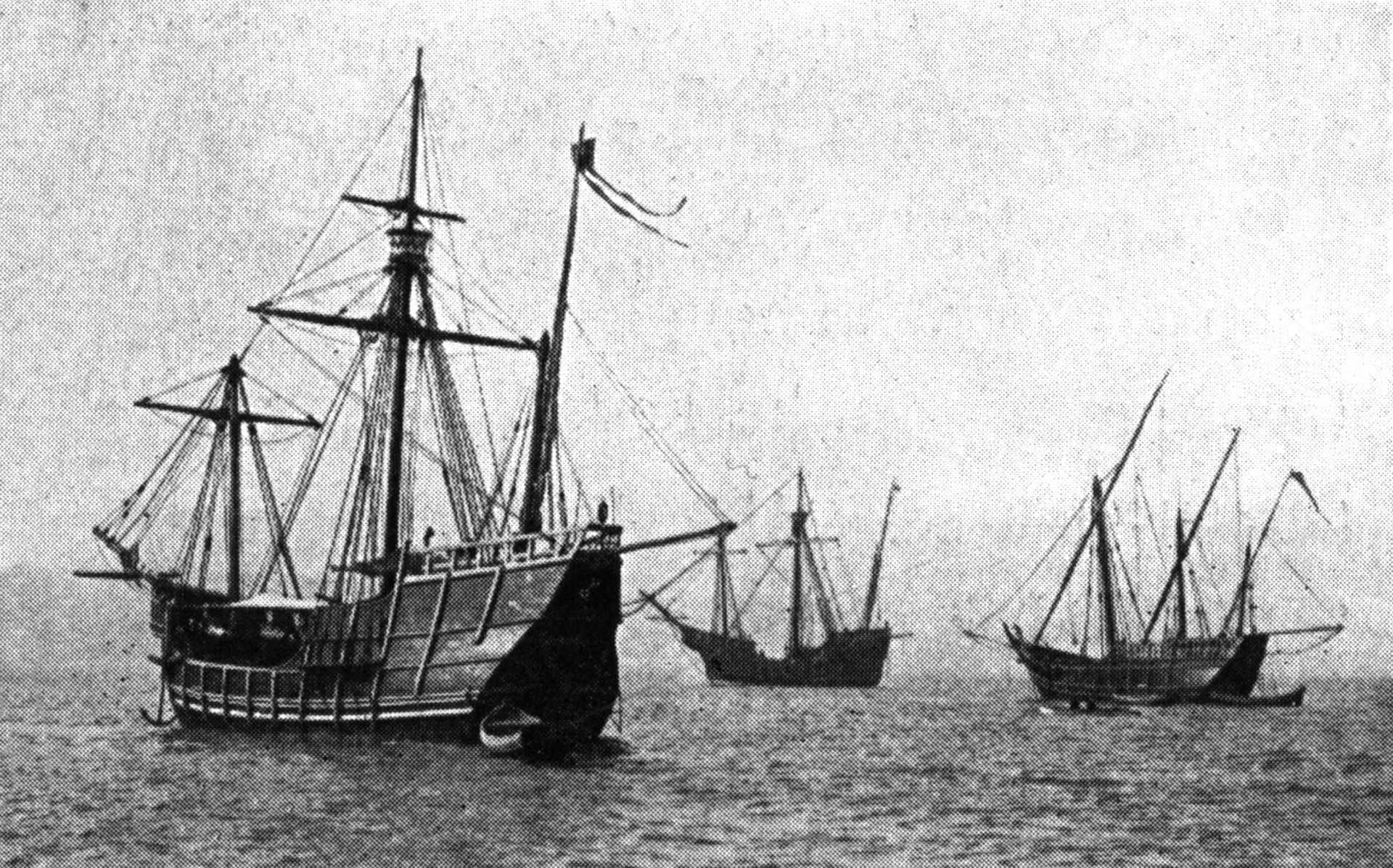
Replicas of Columbus’s ships sailed to the 1893 World’s Fair in Chicago.
The ancient Greeks had accurately calculated that the circumference of the Earth was 40,000 km, which put Asia far to the west. But Columbus botched his calculations. An error in unit conversion gave him a circumference of just 30,000 km.
Read more:
Four amazing astronomical discoveries from ancient Greece
This mistake, with other assumptions born of wishful thinking, gave a distance of just 4,500 km from Europe to Japan. The actual distance is almost 20,000 kilometres.
So Columbus’s ships set sail without enough supplies to reach Asia. Fortunately for him, he hit the Americas. Columbus, thinking he’d found the East Indies, called its people “Indios”, or Indians. He ultimately died without realising his mistake. It was the navigator Amerigo Vespucci who realised Columbus had found an unknown land and in 1507 the name America was applied in Vespucci’s honour.
6. Polynesians: AD 1,200
Around 2,500 BC, a seafaring people sailed from Taiwan to find new lands. They sailed south through the Philippines, east through Melanesia, then out into the vast South Pacific. These people, the Polynesians, were master navigators, reading wind, waves and stars to cross thousands of kilometres of open ocean.
Using huge double canoes, the Polynesians settled Samoa, Fiji, Tonga, and the Cook Islands. Some went south to New Zealand, becoming the Maori. Others went east to Tahiti, Hawaii, Easter Island, and the Marquesas. From here, they at last hit South America. Then, having explored most of the Pacific, they gave up exploration and forgot South America entirely.
But evidence of this remarkable voyage remained. The South Americans acquired chickens from Polynesians, while the Polynesians may have picked up South American sweet potatoes. And they shared more than food. Eastern Polynesians have Native American DNA. Polynesians didn’t just meet Native Americans, they married them.
5. Norse: AD 1,021
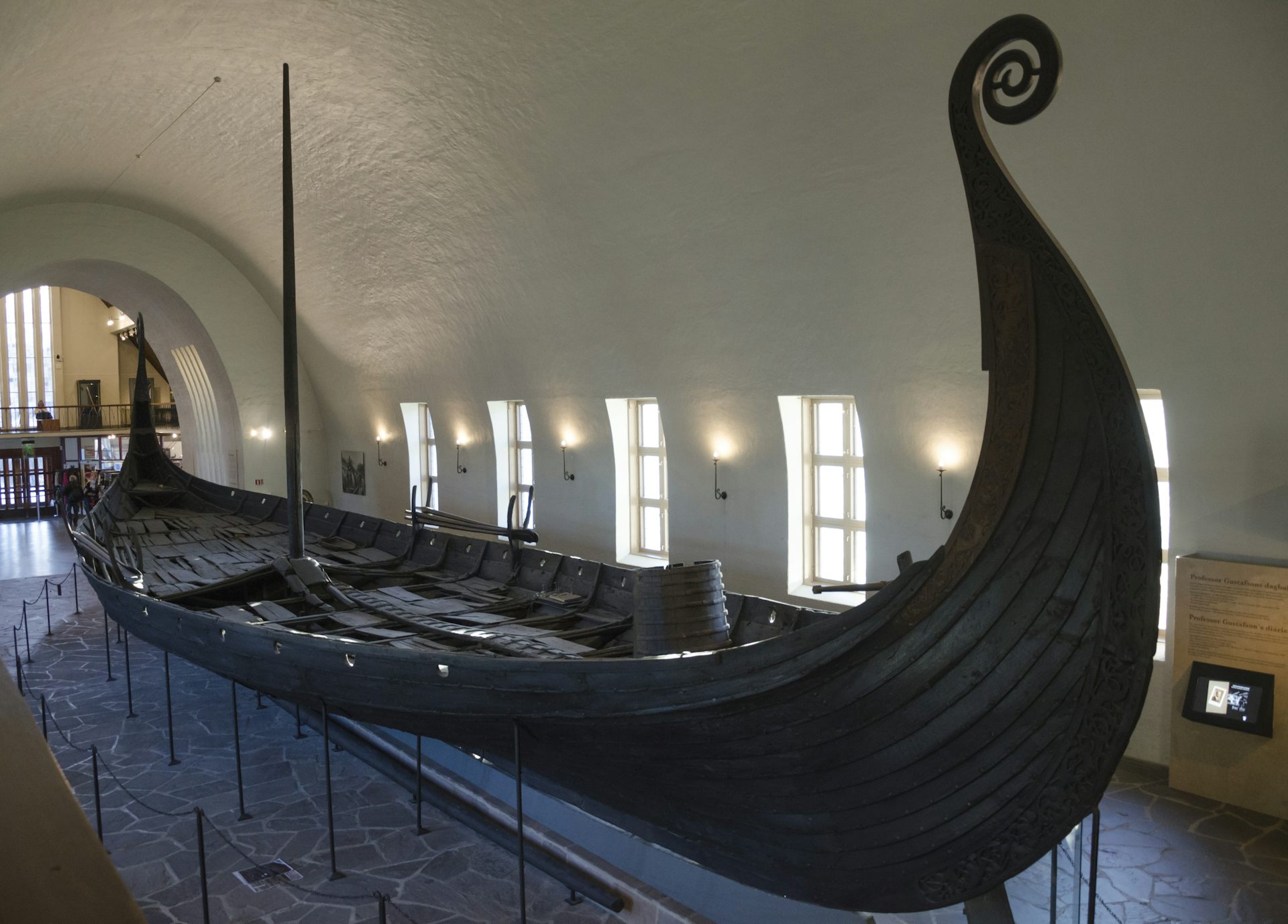
Osebergskipet, a Viking ship constructed in AD 820.
Around AD 1,021, Erik’s son Leif established a settlement in Newfoundland. The Vikings struggled with the harsh climate, before war with Native Americans ultimately forced them back to Greenland. These stories were long dismissed as myths, until 1960, when archaeologists dug up the remains of Viking settlements in Newfoundland.
4. Inuit: AD 900
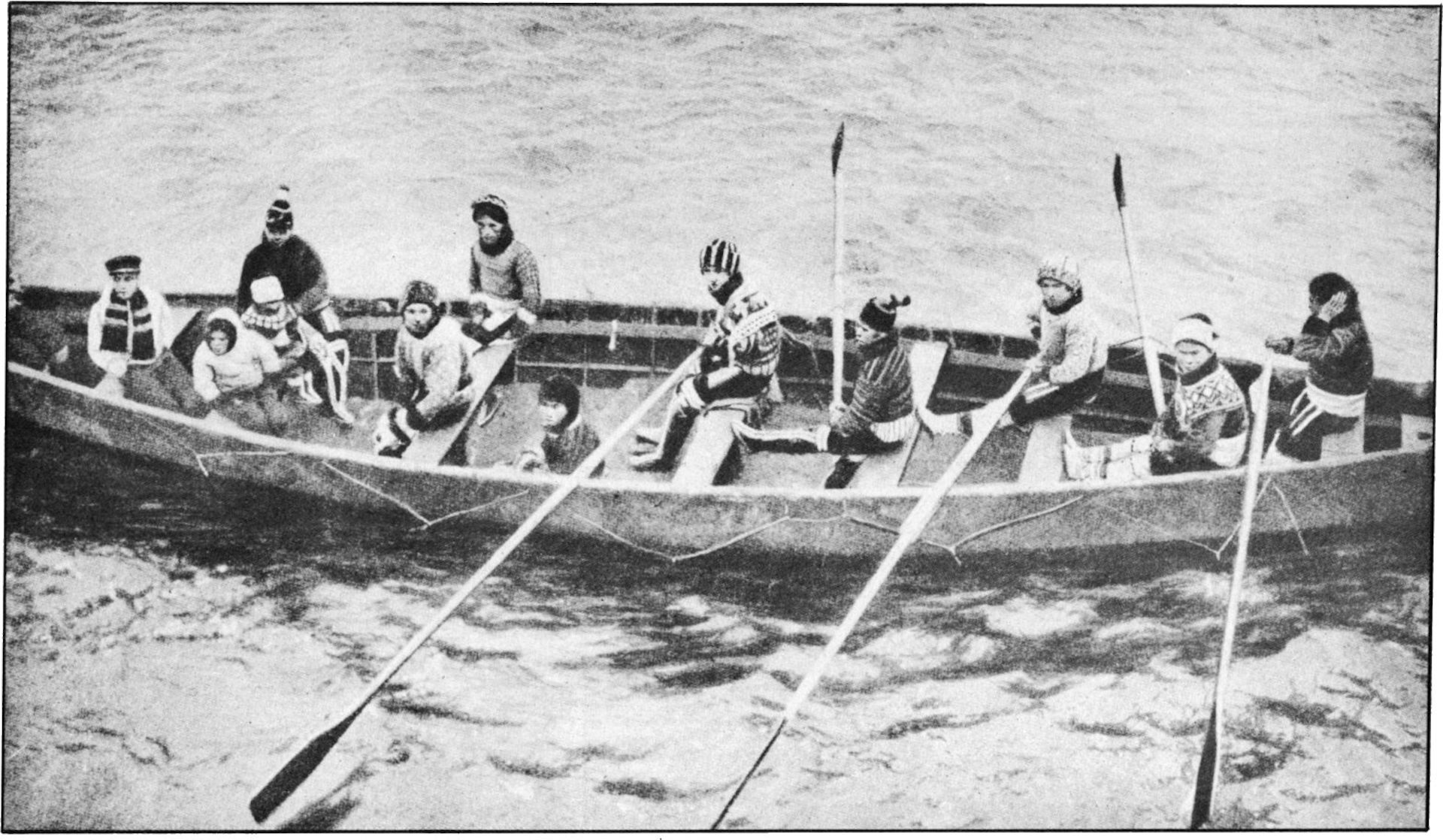
Inuit boats were built from walrus or seal skins stretched over driftwood or whalebone.
Curiously, their DNA is closest to native Alaskans, implying their ancestors colonised Asia from Alaska, then went back to discover the Americas again.
3. Eskimo-Aleut: 2,000-2,500 BC
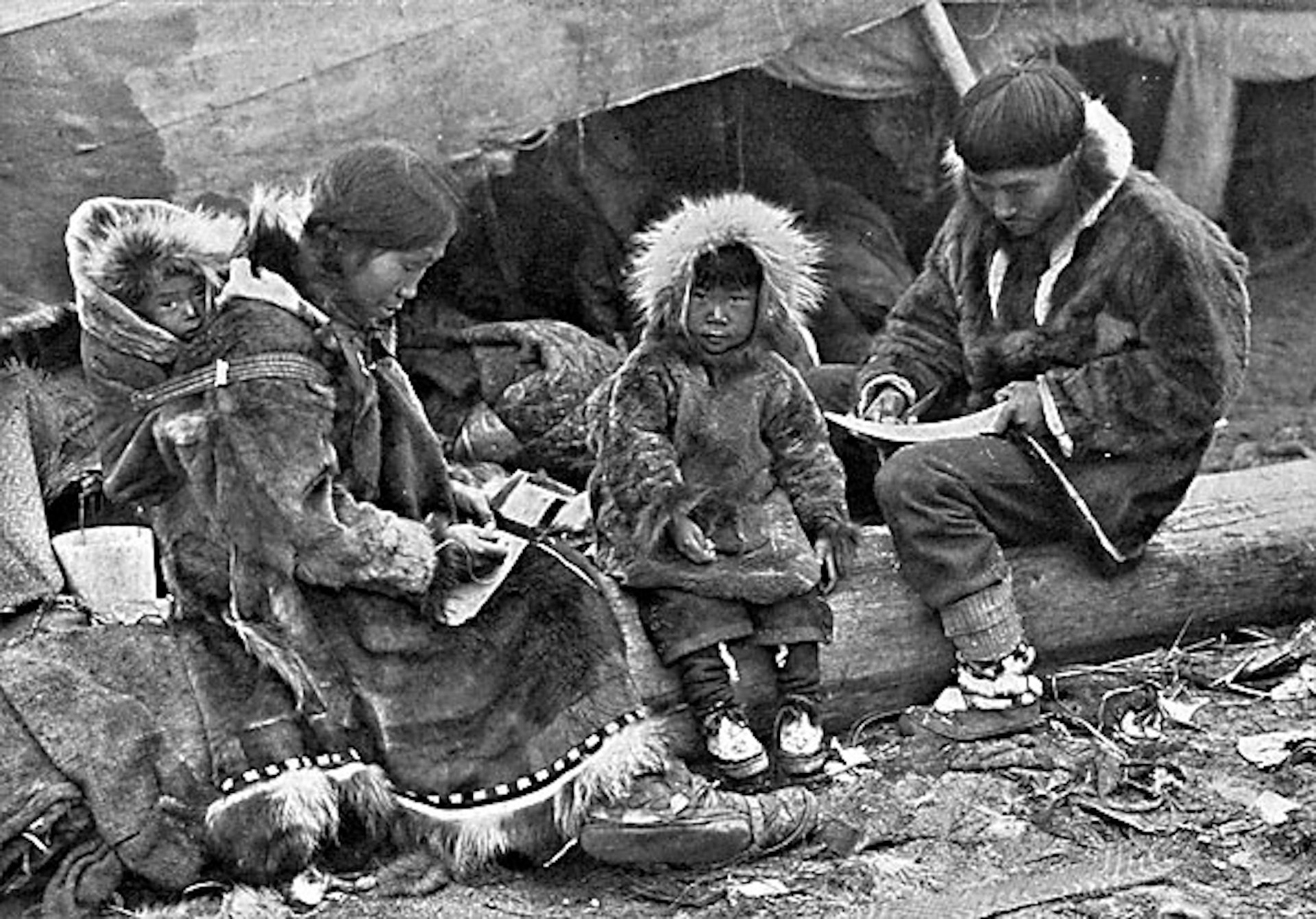
Inuits have a distinct history from other Native Americans.
This, with DNA evidence, suggests the Eskimo-Aleut was a distinct migration. They came across the Bering Sea from present-day Russia to Alaska, perhaps 4,000-4,500 years ago, partly displacing and mixing with earlier migrants: the Na-Dene people.
2. Na-Dene: 3,000-8,000 BC
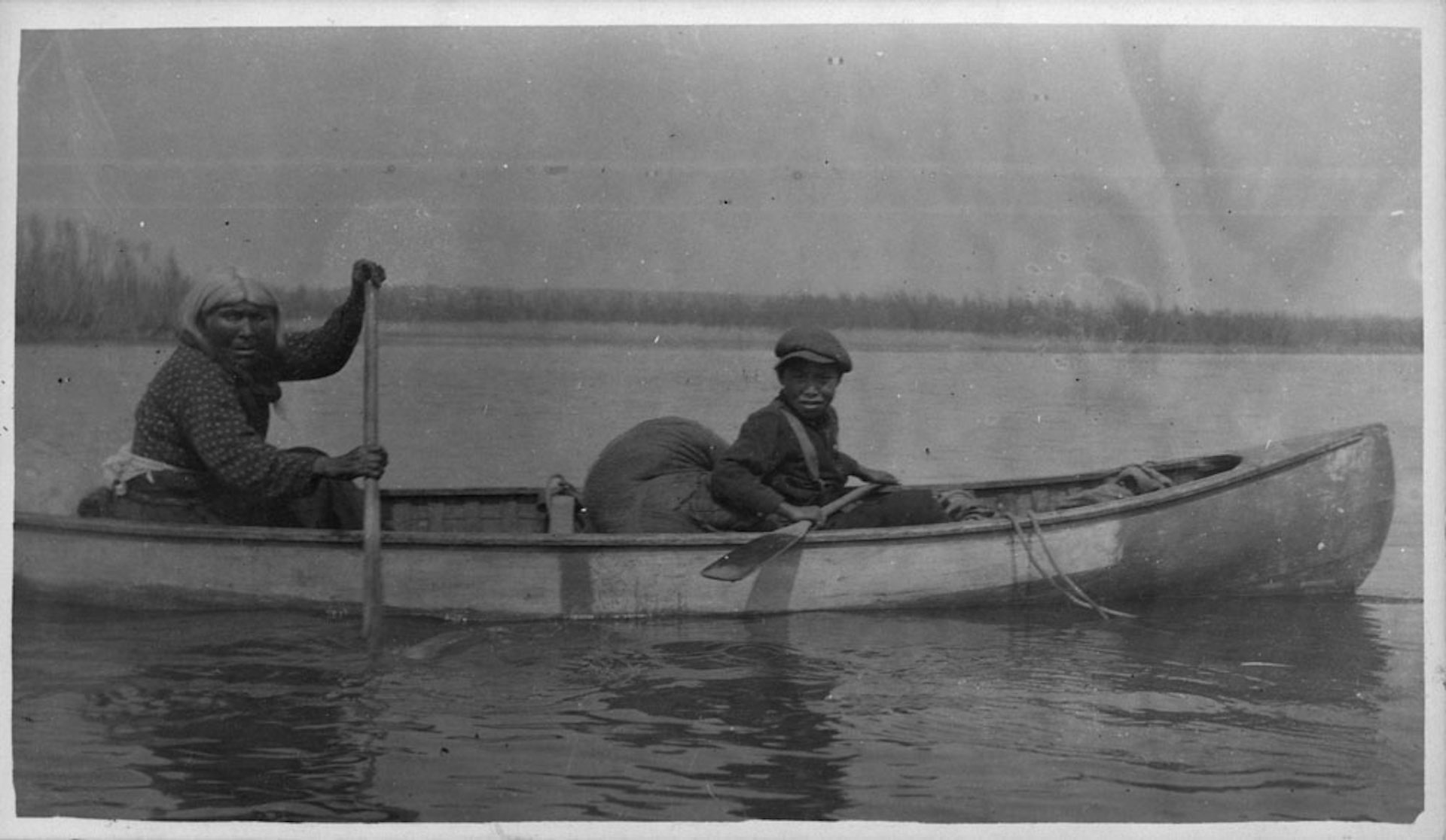
The Na-Dene people may have arrived in Alaska 10,000 years ago.
DNA from their bones links them not to modern people in the Eskimo-Aleut group, but to Native Americans speaking the Na-Dene language family, such as the Navajo, Dene, Tlingit, and Apache people. Na-Dene languages are closest to languages spoken in Siberia, suggesting again that they represent a distinct migration.
1. First Americans: 16,000-35,000 years ago
Almost all Native American tribes – Sioux, Comanche, Iroquois, Cherokee, Aztec, Maya, Quechua, Yanomani, and dozens of others – speak similar languages. That suggests their languages evolved from a common ancestor tongue, spoken by a single tribe entering the Americas long ago. Their descendants’ low genetic diversity suggests this founding tribe was small, maybe less than 80 people.
How did they get there? Before the last ice age ended 11,700 years ago, so much water was locked up in glaciers that sea levels fell. The bottom of the Bering Sea dried out, creating the Bering Land Bridge. America’s first people just walked from Russia to Alaska. But the timing of their migration is controversial.
Archaeologists once thought the Clovis people, living 13,000 years ago, were the first settlers of America. But evidence now suggests humans arrived in the Americas much earlier.
Finds in Washington, Oregon, Texas, the east coast of the US, and Florida suggest people reached the Americas long before the Clovis people.
Read more:
Fossil footprints prove humans populated the Americas thousands of years earlier than we thought
Footprints in New Mexico date to 23,000 years ago. Stone tools in a Mexican cave may date to 32,000 years ago. A butchered mammoth from Colorado dates to 31,000-38,000 years ago. And traces of fire put humans in Alaska 32,000 years ago.
Some of these dates could be incorrect, but with each new discovery it seems increasingly unlikely that they’re all wrong.
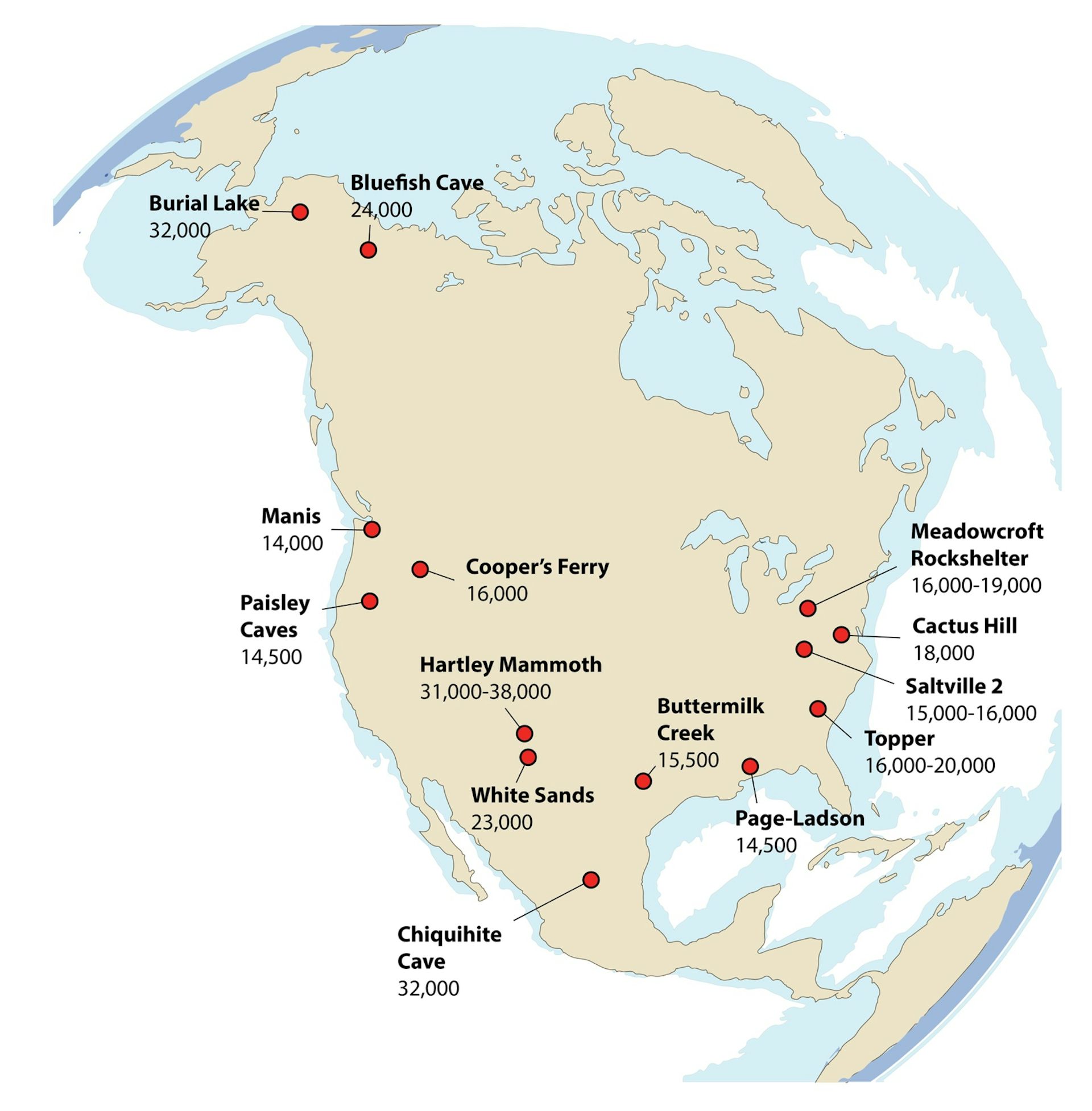
Geographic distribution of pre-Clovis sites. Numbers provided are ‘years ago’.
Nicholas R. Longrich/Google Earth, Author provided
Before the ice spread, people could have hunted mammoths and horses east from Alaska into the Northwest Territories, then south through Alberta and Saskatchewan into Montana. Remarkably, humans may have settled the Americas before western Europe. Yet that might make sense. Alaska’s Arctic is harsh, but Europe had potentially hostile Neanderthals.
The end of discovery 1492 was the last discovery of the Americas. Following the voyages of Columbus, Magellan, and Cook, the scattered descendants of humanity’s diaspora were finally reunited. Aside from a few uncontacted tribes, everywhere was known to everyone. Discovery was impossible.

Captain Cook’s ships, Resolution and Discovery, off the coast of Tahiti.
There’s so much we don’t know. No one can discover the Americas anymore, but there’s a lot left to discover about their discovery.
Nicholas R. Longrich, Senior Lecturer in Paleontology and Evolutionary Biology, University of Bath
Nor, of course, is there any evidence of a Hebrew tribe migrating to the Americas in around 100 CE, as Mormon mythology claims. And even if there had been, it is ludicrous to suppose they would have spoken and written in Jacobean English, a parody of which, Joseph Smith used in his novel, because he knew his ignorant neighbours believed the King James Bible was written in God's own language.
As with all religion, the reason it is called a religion and not science or history is because it doesn’t have a factual basis, as shown by the massive gap between what the Abrahamic religions teach as history, and what the evidence shows the real history to have been. This gap is even wider than that between what most Americans believe their history to have been and what their history really was.



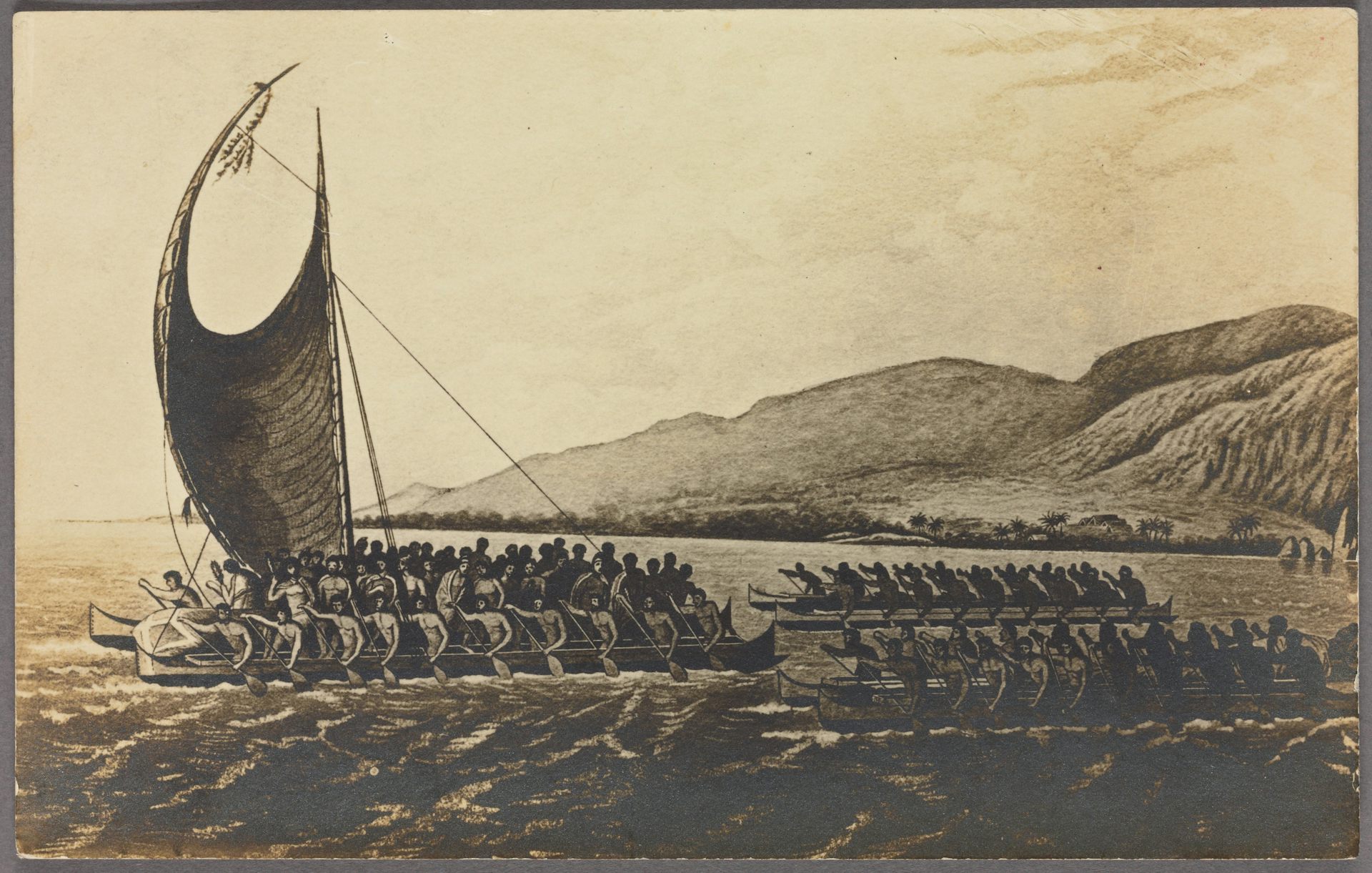
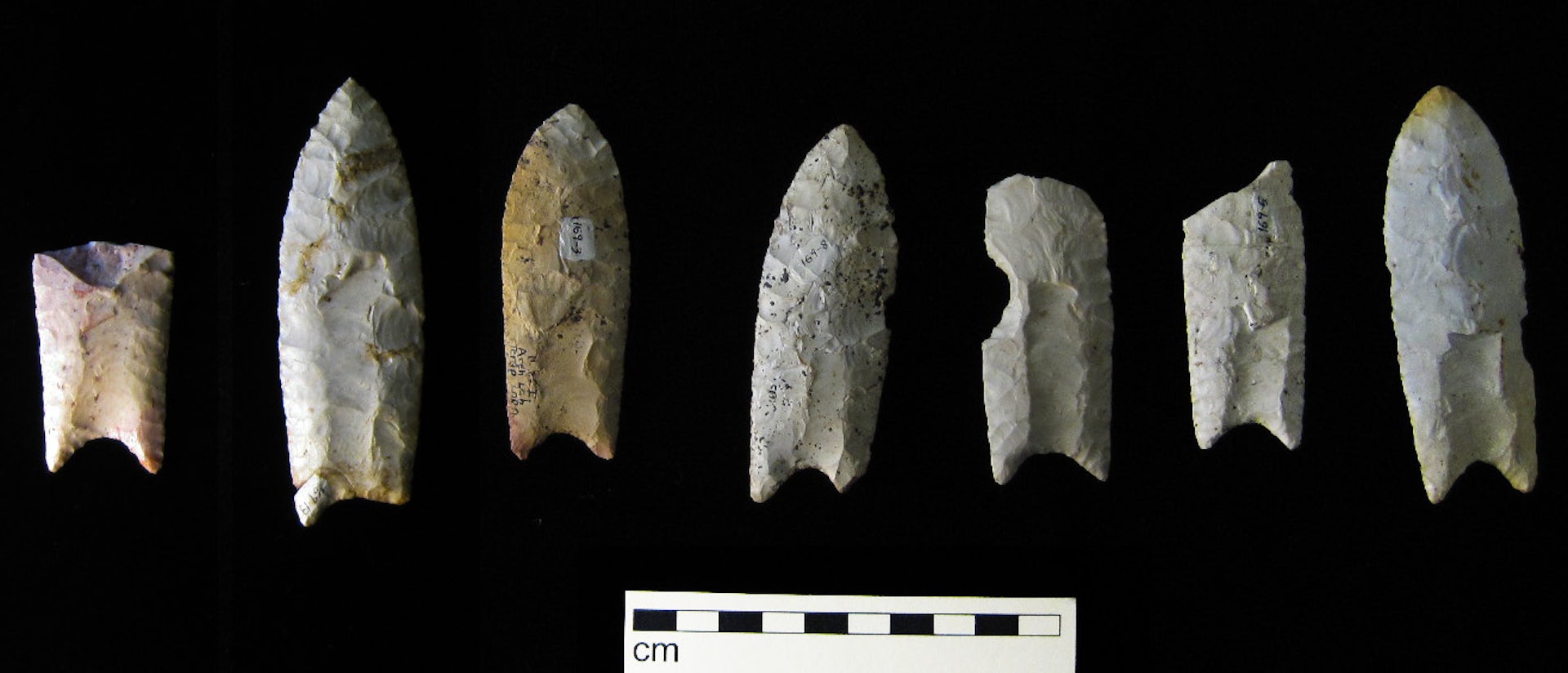


No comments:
Post a Comment
Obscene, threatening or obnoxious messages, preaching, abuse and spam will be removed, as will anything by known Internet trolls and stalkers, by known sock-puppet accounts and anything not connected with the post,
A claim made without evidence can be dismissed without evidence. Remember: your opinion is not an established fact unless corroborated.